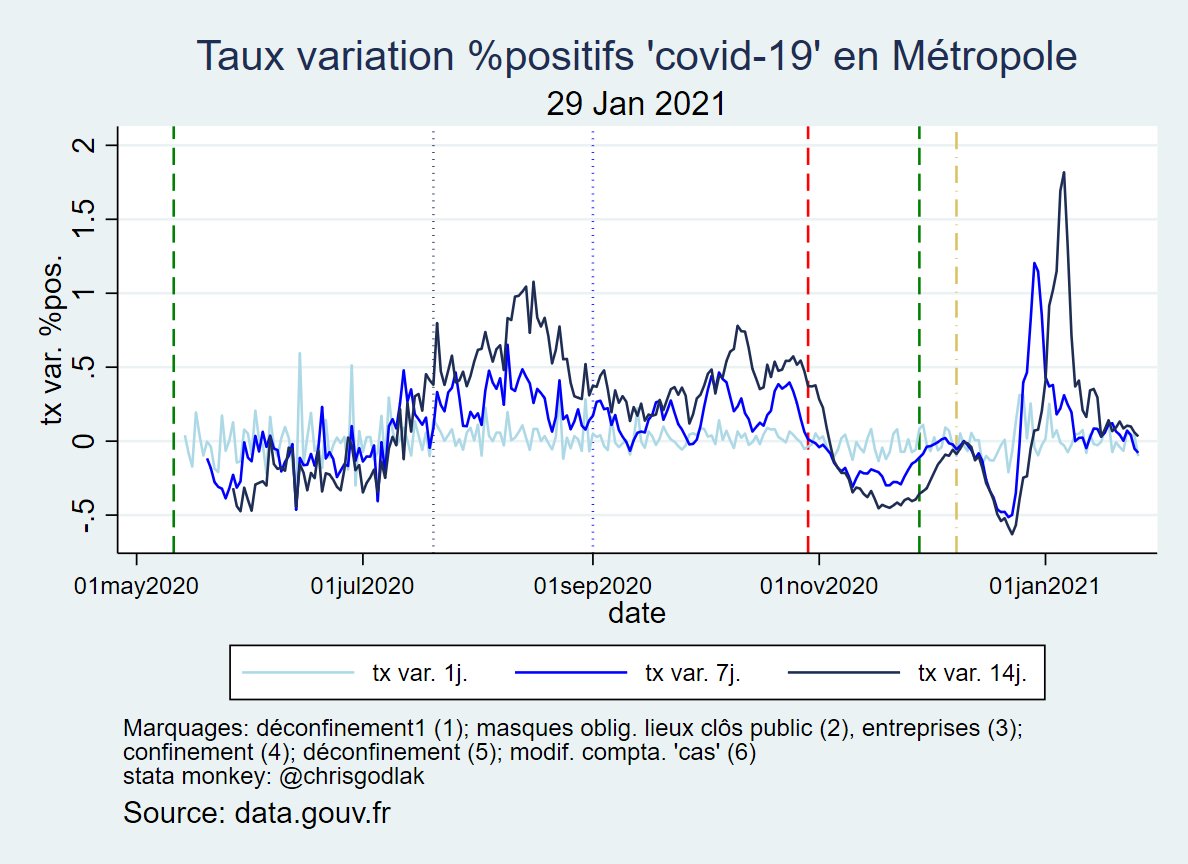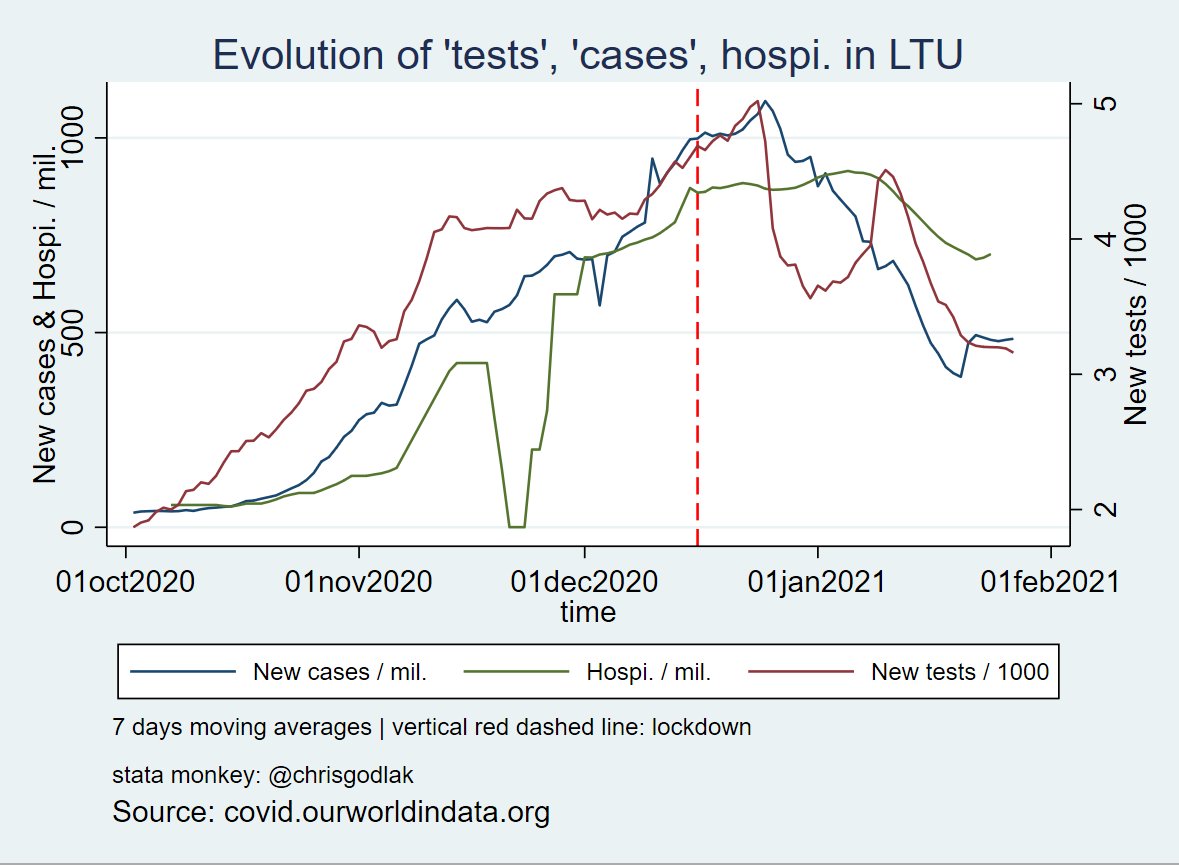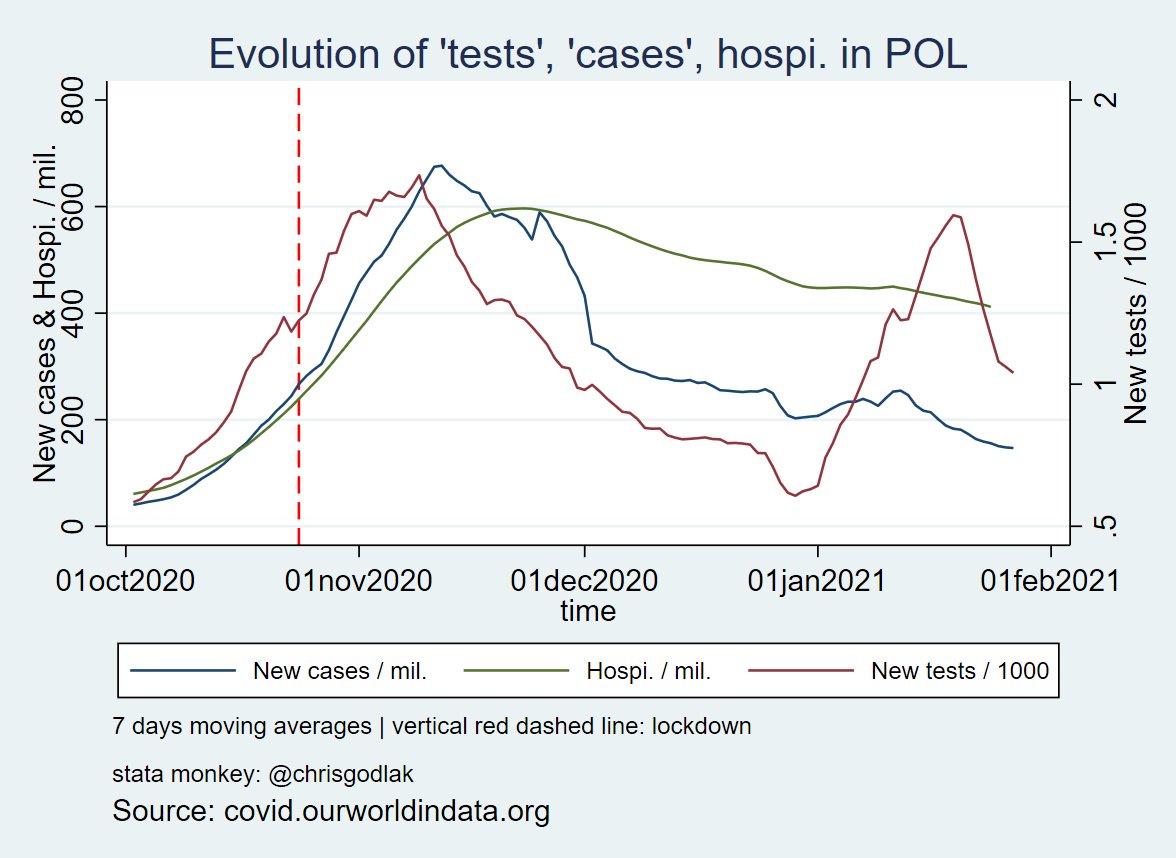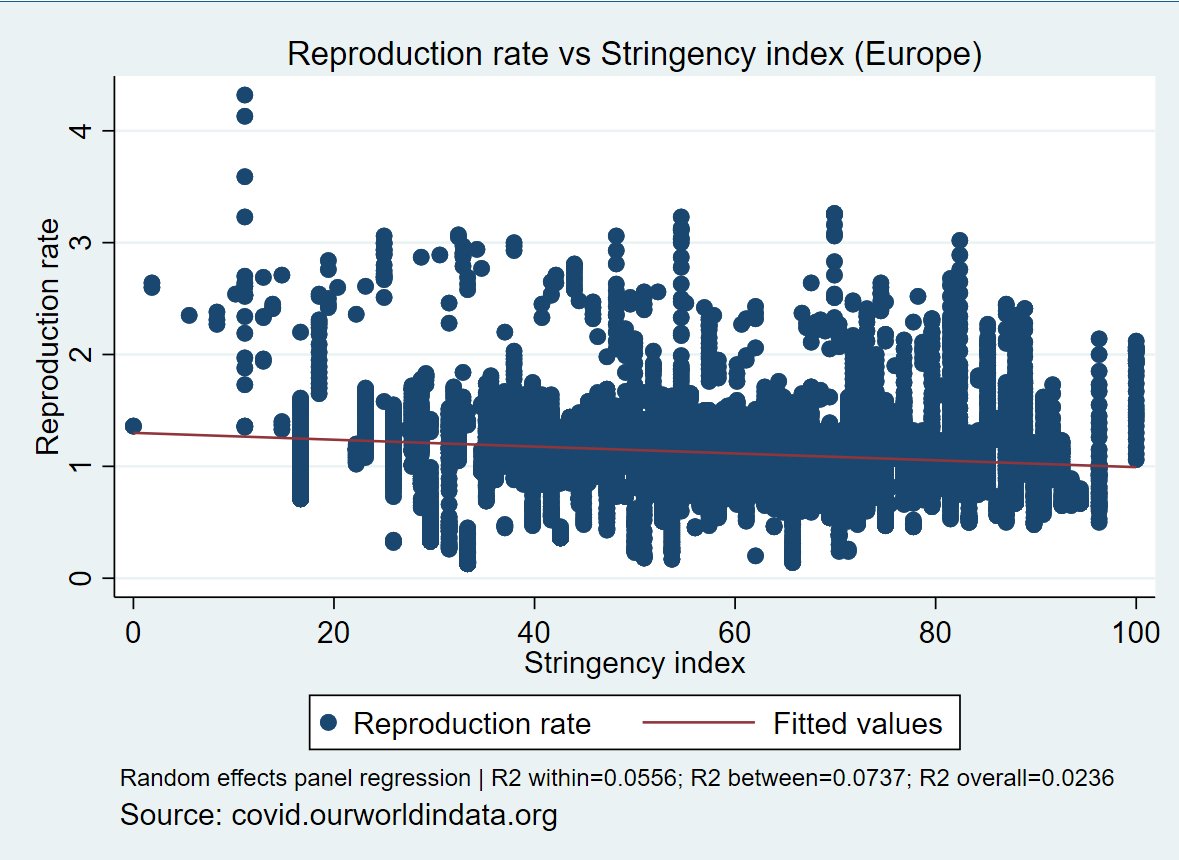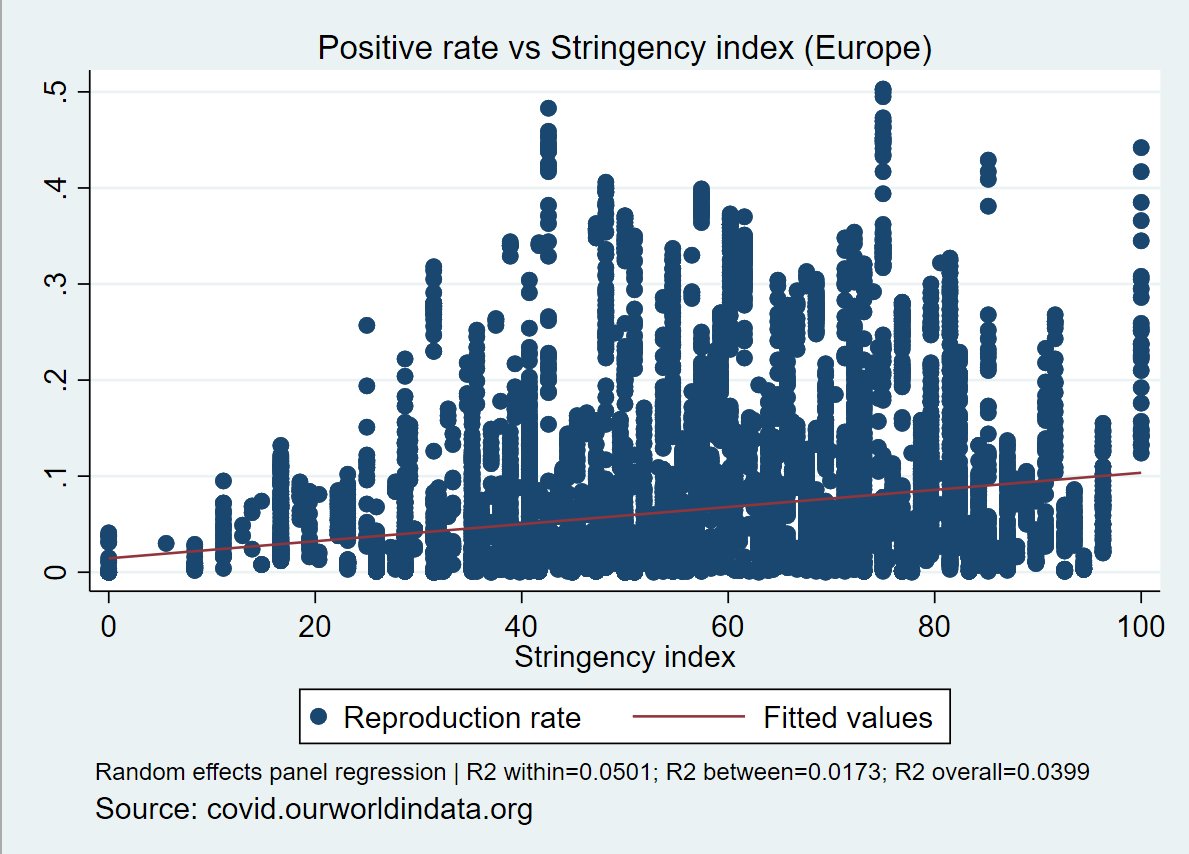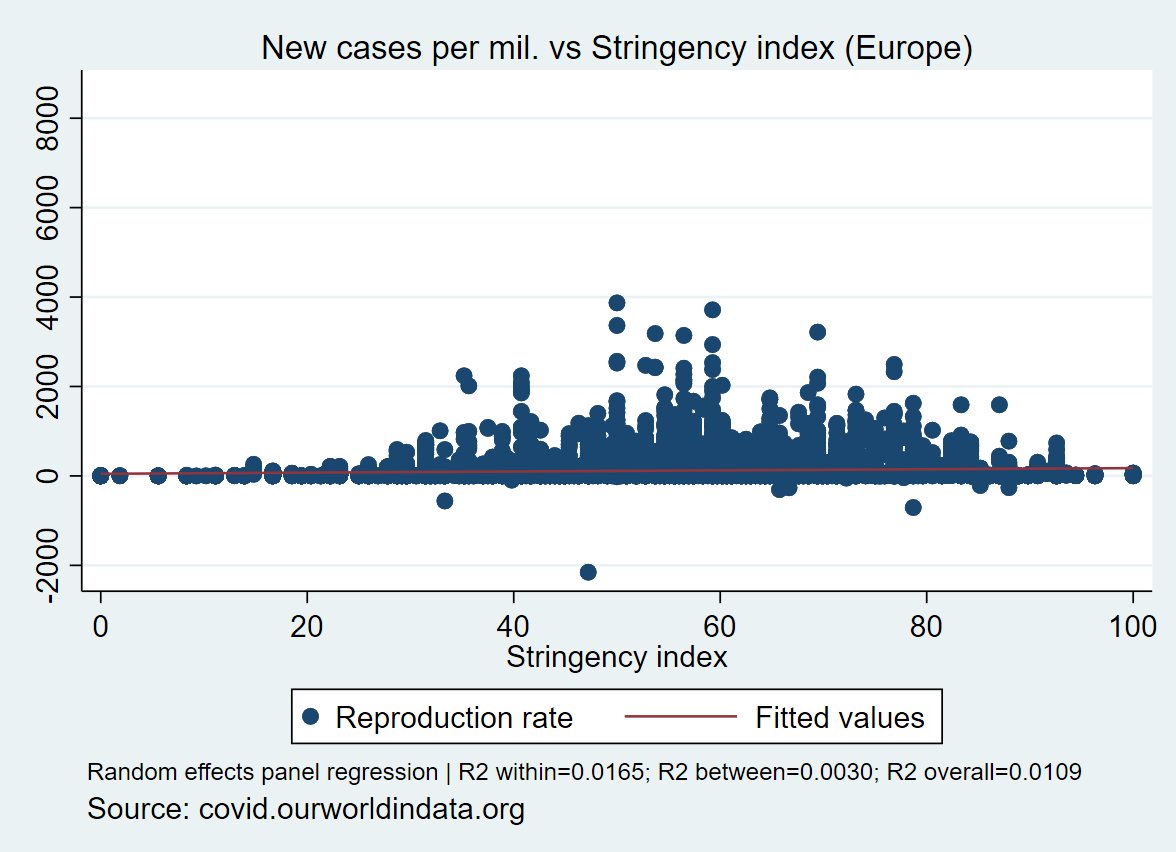
#thread follow up to previous thread below
i repeat the same excercise with positivity rate instead of reproduction rate vs stringency index by adding country, week and both effects in the panel regressions
#COVID19
1/n
i repeat the same excercise with positivity rate instead of reproduction rate vs stringency index by adding country, week and both effects in the panel regressions
#COVID19
1/n
https://twitter.com/ChrisGodlak/status/1355546313849503747?s=20
the graphs:
(notice higher positive rate when stringency stronger)
benchmark: within R² = 5.82%
+country dummies: same
+week dummies = 47.36% (~ x 100 w/r benchmark)
+country & week dum. = as above
again "seasonality" explains most of what is going on in the data
#COVID19
2/n



(notice higher positive rate when stringency stronger)
benchmark: within R² = 5.82%
+country dummies: same
+week dummies = 47.36% (~ x 100 w/r benchmark)
+country & week dum. = as above
again "seasonality" explains most of what is going on in the data
#COVID19
2/n




and so again one can ask if they #lockdown during colder seasons and this makes actually things worse ?
#COVID19
3/3
#COVID19
3/3
you can find me and similar stata monkey analysis on my TG channel: t.me/chrisgodlak
@threadreaderapp unroll
• • •
Missing some Tweet in this thread? You can try to
force a refresh






